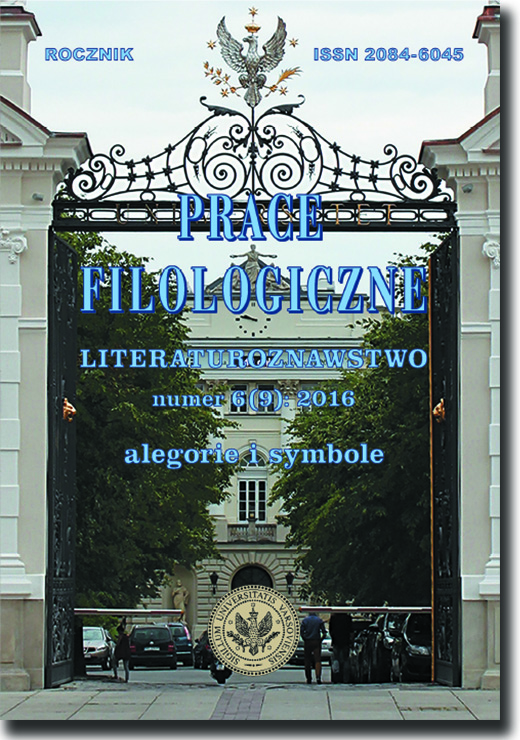Pojęcia symbolu i alegorii w wybranych pracach przedstawicieli szkoły lwowsko-warszawskiej
The concept of symbol and allegory in selected works of representatives of Lvov-Warsaw School
Author(s): Aleksandra HoreckaSubject(s): Literary Texts, Studies of Literature
Published by: Wydział Polonistyki Uniwersytetu Warszawskiego
Keywords: symbol; alegoria; polska filozofia analityczna; szkoła lwowsko-warszawska; symbol; allegory; Polish analytical philosophy; Lvov-Warsaw School
Summary/Abstract: The aim of the article is to put forward and analyze the concepts of symbol and allegory developed by chosen representatives of the Lvov-Warsaw School, in particular Kazimierz Twardowski, Wladyslaw Witwicki, Stanislaw Ossowski, Mieczyslaw Walfisz-Wallis, Leopold Blaustein and Izydora Dąmbska.Whilst defining symbols in science and technology does not present any difficulty for the representatives of the School, defining symbols in art is a challenge. The analysis of papers of School’s members in the domain of art theory and semiotics shows the evolution of the concept of symbol. At the very beginning symbol is treated as the first argument of the three-argument relation of symbolization: an object means something for someone (S.Ossowski, {Analiza pojęcia znaku (Analysis of the concept of sign} (1926)). Then it is considered to be an object presented by something and ? at the same time ? representing something else (S. Ossowski, {U podstaw estetyki (The foundations of aesthetics} (1933)). Eventually, symbol is treated as the first element of complex denotation (I. Dąmbska, {Symbol} (1982)). Symbol first recognized as a sign, then loses its semiotic character(M. Walfisz-Wallis, {Uwagi o symbolach (Remarks on symbols} (1977)). In some theories it becomes a second-order object, object which is defined in terms of indication (J.Kotarbińska, {Pojęcie znaku (The concept of sign} (1957)).As regards allegory, the representatives of Lvov-Warsaw School propose two concepts:(1) allegory as an object designed for unambiguous interpretation, as opposed to symbol, which is destined for ambiguous interpretation (S. Ossowski, {U podstaw estetyki (The foundations of aesthetics)} (1933), J. Kleiner, {Reprezentatywność, symboliczność, alegoryczność (Próba nowejkonstrukcji pojęć), Representativeness, symbolism, allegory (The trial of the new concepts’ construction)} (1950)),(2) allegory as a second-order semiotic object, an object constructed on the concept of symbol (W. Witwicki, {Comments to Plato’s “Phaedrus”} (1918), L. Blaustein, {Przedstawienia schematyczne i symboliczne. Badania z pogranicza psychologii i estetyki (Schematic and symbolic representations. Research fringing upon psychology and aesthetics} (1931)).The article shall also indicate the problems associated with defining symbol and allegory in the case of introducing represented world.
Journal: Prace Filologiczne. Literaturoznawstwo [PFLIT]
- Issue Year: 2016
- Issue No: 6 (9)
- Page Range: 71-91
- Page Count: 21
- Language: Polish

